#symphyotrichum shortii
Explore tagged Tumblr posts
Text

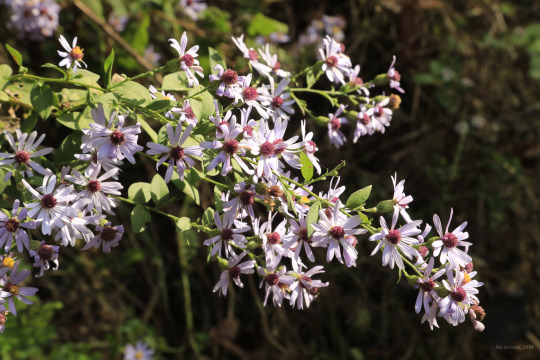
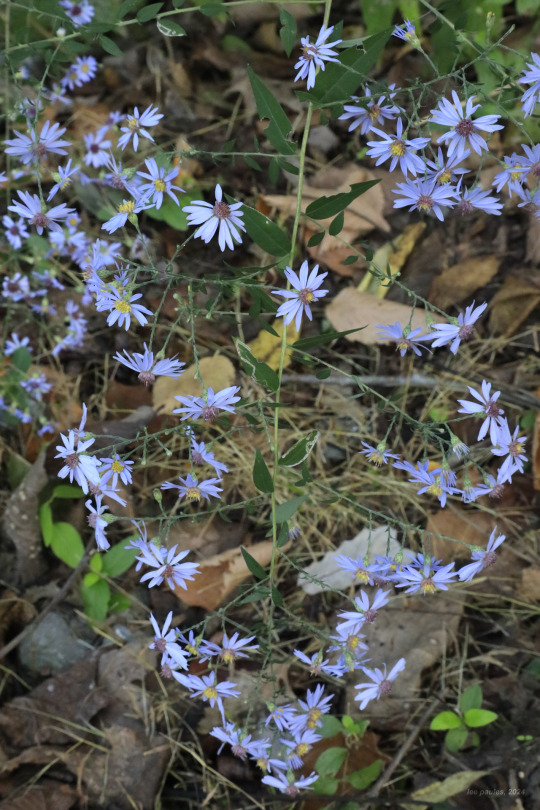

You know it's autumn when . . . the ravishing lavender blossoms of Short's aster (Symphyotrichum shortii) erupt from shady forest edges, especially oak woods. This aster is a personal favorite of mine, not least of all for its dense, spreading clusters of large flowers arrayed on numerous branching stems. Short's aster has long, thin, lanceolate leaves with heart-shaped bases on the lower stem that become gradually more rounded as they ascend. This aster has one of the best form factors of any of our native wildflowers and exhibits beautifully when massed. I planted seeds for Short's aster to pair with the blue-stemmed and zigzag goldenrods in my native wildflower gardens back in September. I'm really looking forward to having the late season color in my gardens next fall.
#appalachia#vandalia#west virginia#wildflowers#flora#fall#autumn#symphyotrichum#symphyotrichum shortii#short's aster
59 notes
·
View notes
Text
Short's Aster (Symphyotrichum shortii (Lindl.) G.L. Nesom)
Asteraceae/Compositae (Aster/Composit Family) Base Flower Color: Yellow, Purple, BlueReproductive Phenology: Aug, Sept, OctBloom Notes: Flower centers (disc flowers) open yellow but turn dark red after pollination. For more information about this plant, Click Here.
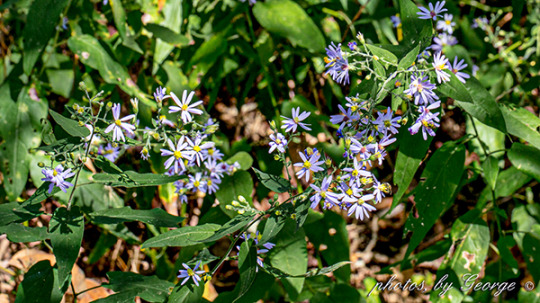
View On WordPress
0 notes
Photo



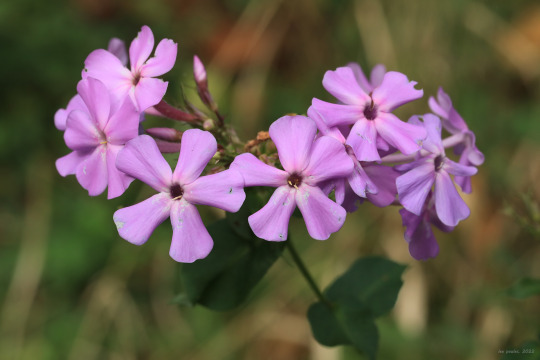
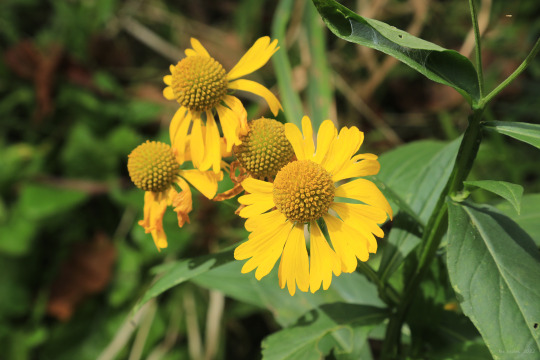



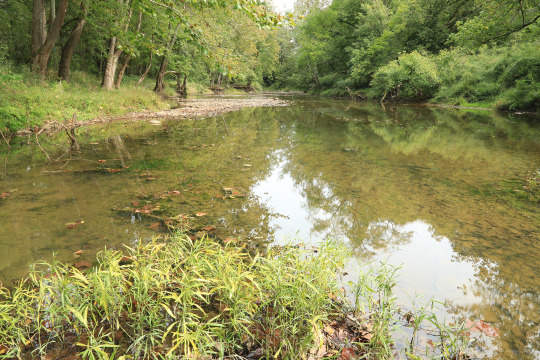
Early fall color along Dunkard Creek at the Mason-Dixon Historical Park. Most notably, broadleaved goldenrod (Solidago flexicaulis), also known as zig-zag goldenrod, is now in bloom. This is one of my favorite wildflowers of any season - it grows in gorgeous clumps with brilliant gold flower spikes and broadly-ovate, sharply serrated foliage. It’s better behaved than most goldenrods and is ideal for a bright pop of autumn color in a native wildflower garden.
From top: broadleaved goldenrod, one of two species in this area with flowers growing from the leaf axils; blue wood aster (Symphyotrichum cordifolium), a common woodland aster that blooms right up to the first frost; garden phlox (Phlox paniculata), also known as tall phlox and fall phlox, a tall, wetlands-loving perennial that blooms from July through early October in Central Appalachia; sneezeweed (Helenium autumnale), which loves the marshy edges of ponds, lakes, and streams; short’s aster (Symphyotrichum shortii), a woodland aster with a special fondness for limestone bluffs.
#appalachia#vandalia#west virginia#pennsylvania#fall#autumn#dunkard creek#mason-dixon historical park#solidago flexicaulis#broadleaved goldenrod#zig-zag goldenrod#symphyotrichum cordifolium#blue wood aster#phlox paniculata#garden phlox#tall phlox#fall phlox#helenium autumnale#common sneezeweed#symphyotrichum shortii#short's aster#wildflowers#flora
56 notes
·
View notes
Photo
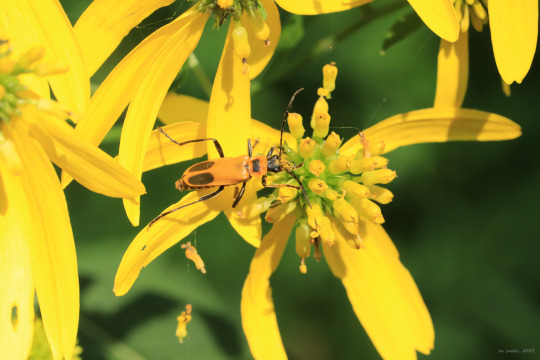
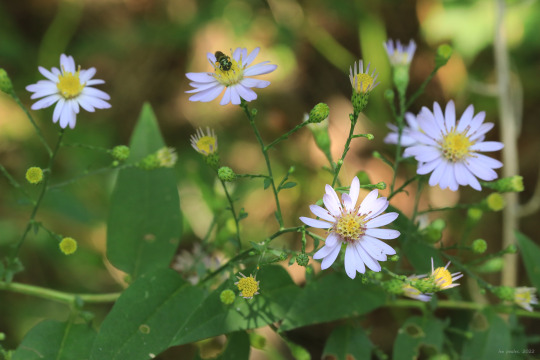
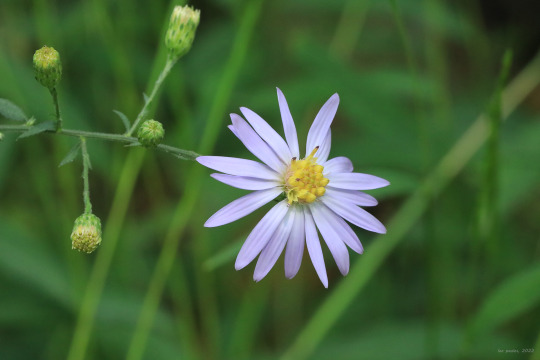
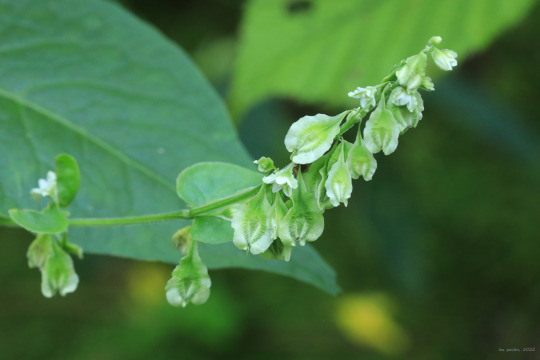
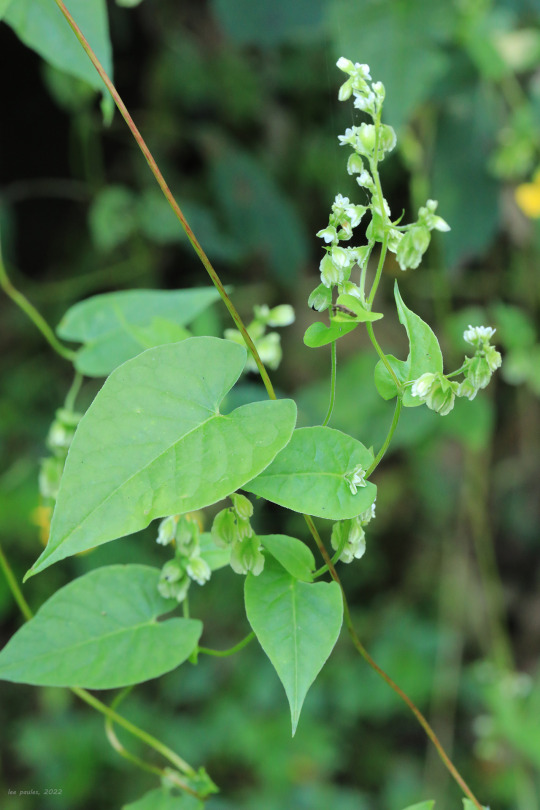
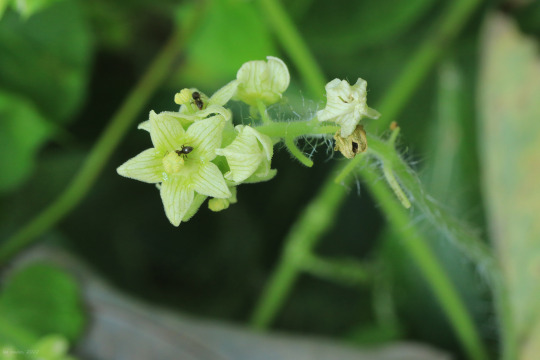


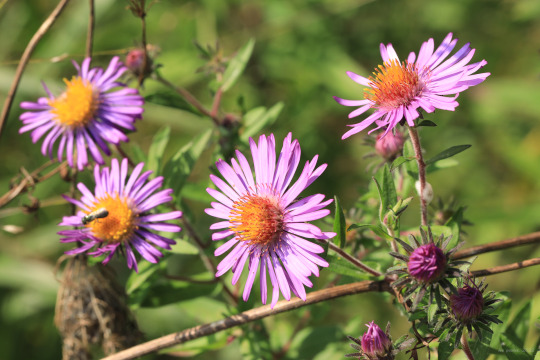
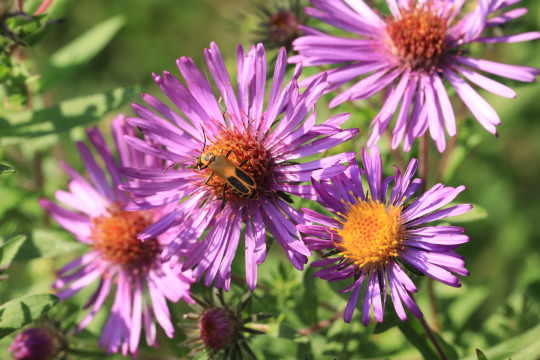
A few late summer odds and ends from a bike ride on the Mon River Trail yesterday. The asters are really starting to pop now as the days grow noticeably shorter and autumn closes in. A number of interesting vines are also in bloom and producing fruit for wildlife before the first frost. Climbing false buckwheat (Fallopia scandens) and oneseed bur cucumber (Sicyos angulatus), a member of the gourd family, are both aggressive twining vines with distinctive foliage, flowers, and fruits.
From top: a goldenrod soldier beetle strikes nectar gold on a wingstem flower (Verbesina alternifolia); Short’s aster (Symphyotrichum shortii), a really beautiful perennial often found growing in dry to mesic oak-hickory woods with limestone near the surface; climbing false buckwheat, a delicate twiner whose pendulous fruit has three ruffled sides, like pantaloons; oneseed bur cucumber, whose bristly fruit can cause painful stings; crooked-stemmed aster (Symphyotrichum prenanthoides), also known as zag-zag aster, whose stems often zig-zag between the nodes of its spatula-shaped leaves; and the glorious New England aster (Symphyotrichum novae-angliae), one of the most important pollinator plants of late summer and early autumn.
#appalachia#vandalia#west virginia#late summer#flora#wildflowers#mon river trail#verbesina alternifolia#wingstem#symphyotrichum shortii#short's aster#fallopia scandens#climbing false buckwheat#sicyos angulatus#oneseed bur cucumber#bur cucumber#symphyotrichum prenanthoides#crooked-stemmed aster#crooked-stem aster#zig-zag aster#symphyotrichum novae-angliae#new england aster
41 notes
·
View notes
Photo
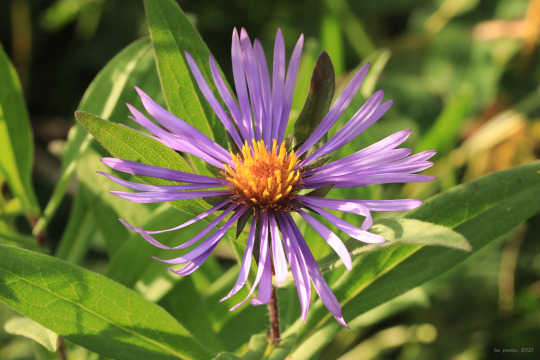

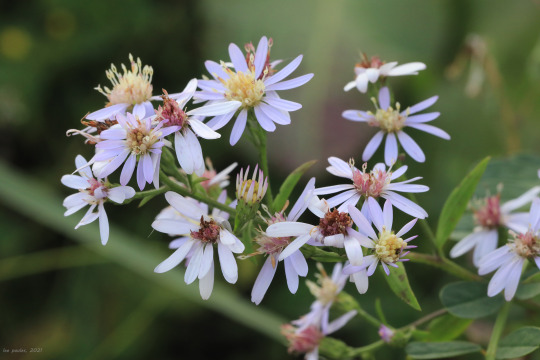
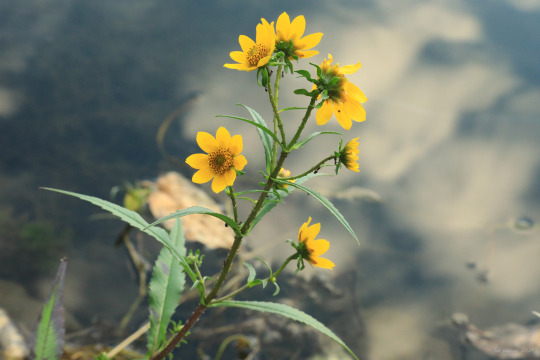


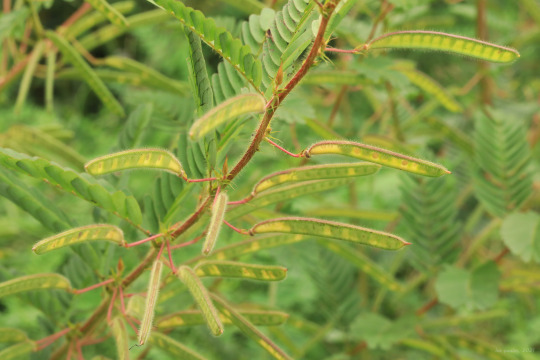
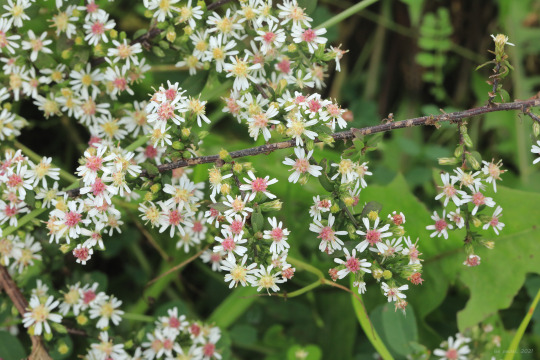
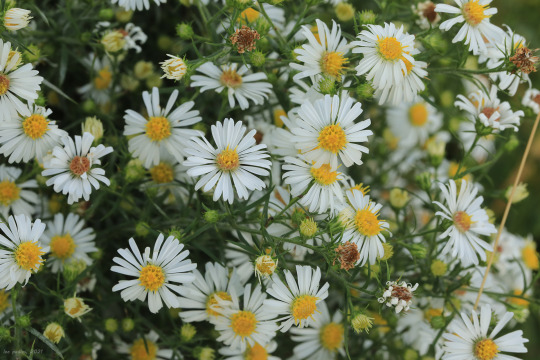
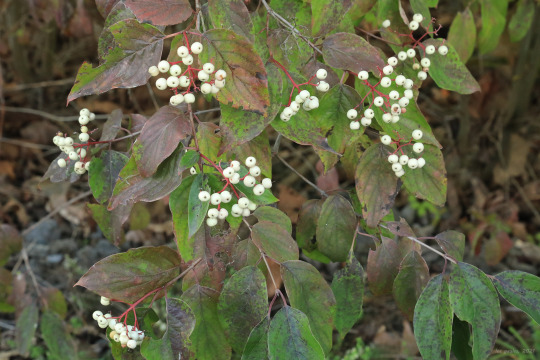
Appalachia’s Autumn Bounty, Panel 1: Nature’s final push before the killing frost of October.
#appalachia#vandalia#west virginia#flora#wildflowers#berries#seeds#fall#autumn#october#symphyotrichum novae-angliae#new england aster#michaelmas daisy#symphyotrichum shortii#short's aster#bidens cernua#nodding beggartick#nodding bur-marigold#chamaecrista fasciculata#partridge pea#symphyotrichum lateriflorum#calico aster#side-flowering aster#symphyotrichum pilosum#oldfield aster#hairy white oldfield aster#frost aster#cornus sericea#red osier#red-osier dogwood
72 notes
·
View notes
Photo



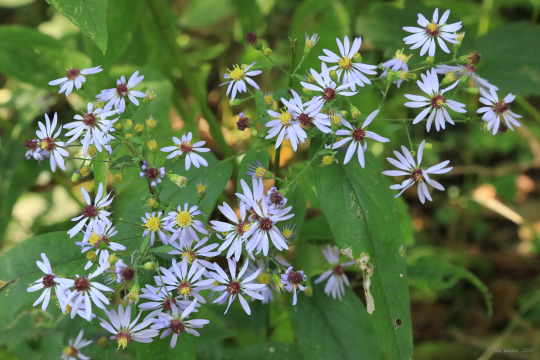
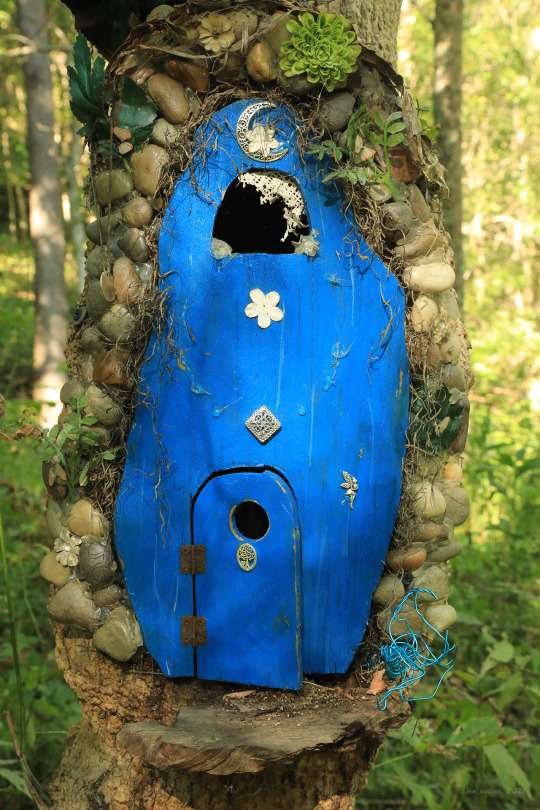
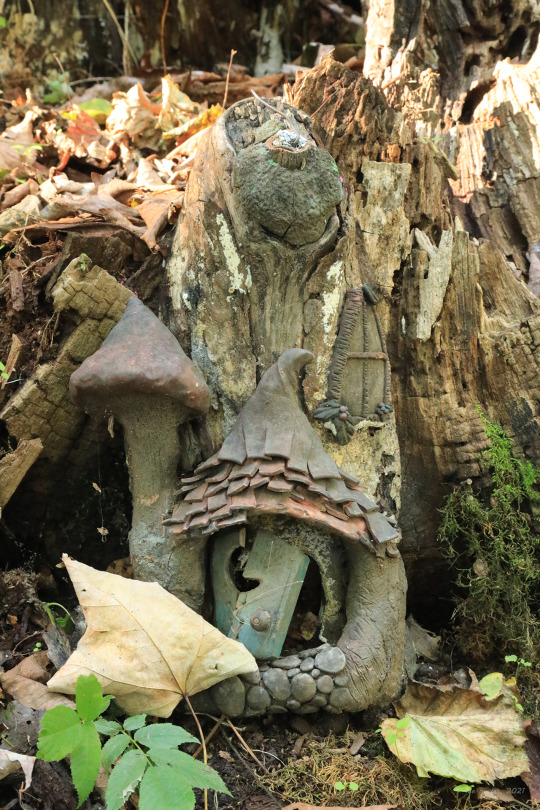

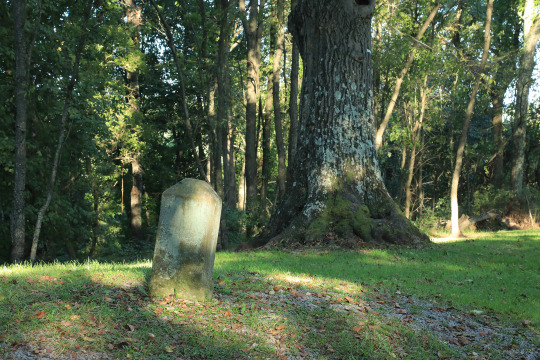
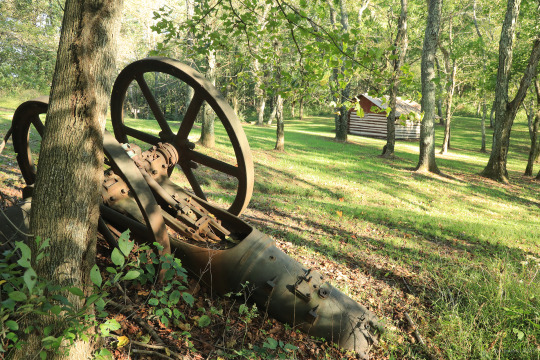

The photos above are from an early fall stroll through Mason-Dixon Historical Park, which straddles the state line between West Virginia and Pennsylvania along Dunkard Creek and the historic Catawba War Path of the Six Nations. The park commemorates the farthest progression to the west of the Mason and Dixon Survey in the mid 1760′s. Hostile Shawnee and Delaware tribes put a stop to the survey at Brown’s Hill, where numerous stone markers denote the demarcation line between north and south. In addition to the artifacts of the area’s pre-Revolutionary War history and oil and gas industry, the park features a network of easy to moderately-strenuous trails traversing Brown’s Hill and Dunkard Creek, as well as a popular fairy trail.
#appalachia#vandalia#west virginia#pennsylvania#mason-dixon historical park#mason-dixon line#brown's hill#catawba war path#catawba trail#native american history#six nations#colonial history#artifacts#dunkard creek#helianthus strumosus#pale-leaved sunflower#pale-leaf sunflower#phlox paniculata#fall phlox#symphyotrichum shortii#short's aster#fall#autumn
47 notes
·
View notes